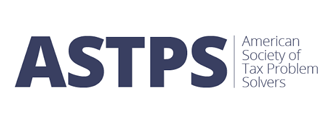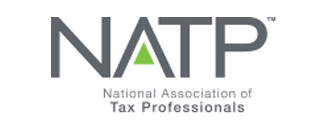What Happens If You Ignore IRS Collection Letters?
February 18, 2025
February 18, 2025
Ignoring IRS letters can lead to serious consequences.

Receiving a letter from the IRS is never pleasant, but ignoring these letters can lead to serious consequences. Whether the letter is a simple notice or a formal demand for payment, failing to respond can escalate your tax issues quickly. At Advantage Tax Relief, we’ve seen firsthand how unresolved IRS collection letters can snowball into bigger problems. Let’s discuss what happens if you ignore these notices and how you can take proactive steps to resolve your tax issues before it’s too late.
Why You Should Never Ignore IRS Letters
The IRS uses collection letters to communicate with taxpayers about unpaid taxes, errors on returns, or other issues that require attention. These letters often include deadlines for action and missing them can worsen your financial situation. Ignoring an IRS collection letter sends the wrong message to the IRS—that you are unwilling to cooperate—and can lead to severe penalties.
The Progression of IRS Collection Letters
IRS collection letters usually follow a specific sequence. Here’s a breakdown of the most common notices and what they mean:
CP14 – Notice of Tax Due and Demand for Payment This is typically the first letter you receive when you owe taxes. It outlines the amount owed, including penalties and interest. Ignoring this letter won’t make the debt go away; it will only increase over time.
CP501 – Reminder Notice If you don’t respond to the CP14, the IRS will send a CP501 as a reminder. This letter highlights that your debt remains unpaid and encourages you to take action.
CP503 – Second Reminder By this point, the IRS is becoming more insistent. The CP503 emphasizes the urgency of resolving your tax debt and warns that failure to act could result in enforced collection actions.
CP504 – Final Notice Before Levy The CP504 is a serious warning. It notifies you that the IRS intends to seize your assets, such as bank accounts or wages, to satisfy your tax debt. This is your last chance to act before enforcement begins.
Letter 1058 or LT11 – Final Notice of Intent to Levy This letter is the final step before the IRS takes legal action. It informs you of your right to a Collection Due Process (CDP) hearing. Ignoring this letter means the IRS can proceed with levies and liens.
Consequences of Ignoring IRS Collection Letters
Failing to respond to IRS notices can lead to several serious outcomes:
1. Accruing Penalties and Interest
Unpaid taxes accumulate interest daily, and penalties can add up quickly. The longer you wait, the more you’ll owe. The IRS charges a failure-to-pay penalty of 0.5% of the unpaid tax amount for each month or part of a month that the debt remains unpaid, up to a maximum of 25%.
2. Federal Tax Liens
A federal tax lien is the government’s legal claim against your property when you fail to pay your tax debt. Liens can:
Damage your credit score
Make it difficult to sell or refinance your property
Stay in place until the debt is paid in full
3. Wage Garnishments
If you ignore IRS notices, the agency may garnish your wages to collect the debt. This means your employer will be required to send a portion of your paycheck directly to the IRS until your tax debt is satisfied.
4. Bank Levies
The IRS can freeze your bank accounts and seize funds to cover your tax liability. You won’t be able to access your money until the levy is resolved, which can cause significant financial hardship.
5. Property Seizures
In extreme cases, the IRS can seize physical assets, such as your home, car, or other valuables, to satisfy your tax debt. While this is less common, it’s a real possibility if you continually ignore IRS letters.
6. Passport Revocation or Denial
The IRS can notify the State Department of your tax delinquency, leading to the denial or revocation of your passport. This can impact your ability to travel internationally.
How to Respond to IRS Collection Letters
Ignoring IRS letters is never the solution. Here’s what you should do instead:
1. Read the Letter Carefully
Each letter provides specific details about your tax situation, including the amount owed, deadlines, and instructions for resolving the issue. Understanding the letter is the first step in addressing the problem.
2. Verify the Information
Mistakes can happen. Double-check your records to confirm the accuracy of the IRS’s claims. If you believe there’s an error, you can dispute it.
3. Act Promptly
The IRS provides deadlines for a reason. Responding promptly can prevent penalties, interest, and enforcement actions. Even if you can’t pay the full amount, taking action is better than doing nothing.
4. Explore Your Options
There are several ways to resolve tax debt, including:
Payment Plans: Installment agreements allow you to pay your debt overtime.
Offer in Compromise: Settle your debt for less than you owe if you meet specific criteria.
Currently Not Collectible Status: Temporarily delay payment if you’re facing financial hardship.
5. Seek Professional Help
Dealing with the IRS can be overwhelming, especially if you’re unfamiliar with tax laws and procedures. Working with a tax resolution company like Advantage Tax Relief can make the process much smoother. Our experienced professionals will negotiate with the IRS on your behalf and find the best solution for your situation.
Why Choose Advantage Tax Relief?
At Advantage Tax Relief, we understand the stress and anxiety that comes with IRS collection letters. Here’s why you can trust us to help:
Experienced Professionals: Our team includes tax professionals and tax attorneys with years of experience.
Proven Track Record: We’ve helped countless clients resolve their tax issues successfully.
Personalized Solutions: We tailor our approach to meet your unique needs and circumstances.
Transparent Pricing: No hidden fees, just honest and upfront pricing.
Ignoring IRS collection letters can lead to serious consequences, but your tax debt can be resolved.
Conclusion
IRS collection letters are a warning sign that action is needed. Ignoring them won’t make the problem go away; it will only make it worse. From penalties and interest to wage garnishments and property seizures, the consequences of inaction can be severe.
The good news is that help is available. At Advantage Tax Relief, we specialize in helping taxpayers like you resolve their IRS issues and regain financial peace of mind. Don’t wait until it’s too late—contact us at (630) 773-3200 or visit https://www.advantagetaxrelief.net/request-form to get started today.


October 1, 2025
It seems like natural disasters such as hurricanes, floods, earthquakes, wild fires, and tornados are happening all the time and just about everywhere. Climate change also seems to be making these disasters more deadly and more destructive. Many people do step up to help survivors with needed financial donations. The only thing worse than the disasters themselves are the scammers that exploit these situations for financial gain at the expense of hard working and well-i ntentioned survivors and donors. Like yourself! Scams can take the form of fake charities and impostors posing as legitimate organizations or government agencies. Common scams typically entail vague appeals for donations without details, fake websites with names like real charities and caller ID tricks to appear legitimate. Several warnings signs of these scammers are: 1) pressure to give immediately, often preying on your emotions and not logic 2) a thank-you for a previous donation you don’t recall making 3) a request for payment by cash, gift card or wire transfer. The last are scammers’ favored payment methods because the money is easy to access, difficult to trace and almost impossible to cancel. A legitimate charity will welcome your donation whenever you choose to make it and by whatever means you choose. A great way to verify their legitimacy is to use the IRS Tax Exempt Organization Search tool at https://apps.irs.gov/app/eos/. Additionally, clients should always ask for a receipt and then check their bank or credit card statements to ensure the donation amount is accurate. If you think you were a victim of a suspected scam, you can and should report them to the Federal Trade Commission at https://reportfraud.ftc.gov/. How Advantage Tax Relief Can Assist You At Advantage Tax Relief, based in Itasca, IL, we have over a decade of experience helping individuals and businesses resolve tax issues. Our team specializes in offering personalized tax relief and tax resolution solutions tailored to your unique needs. We will work with you to assess your situation and explore your options, whether it’s an Offer in Compromise, installment agreements, or other strategies. Our experience allows us to identify the best path forward to ease your tax burden and guide you toward financial freedom. If you're facing tax debt, don't wait. Advantage Tax Relief is here to assist you with effective, professional help. Call Advantage Tax Relief today at 630-773-3200 to schedule a consultation and take the first step toward resolving your tax issues.

August 29, 2025
First, working overtime does not mean you are getting an automatic increase in your take-home pay because it is not going to be taxed. That is not what is going to happen. The tax savings will be in the form of a tax deduction when you file your Federal tax return the following year. There will be no immediate impact. Second, it only applies for Federal income taxes. It does not include State, Social Security or Medicare taxes. Third, it also only applies to the overtime premium and within certain deduction and wage limits. You can only deduct the pay that exceeds your regular rate of pay. The 'half' portion of 'time-and-a-half' compensation. For example, say you make $20 per hour and work 5 hours of overtime that week at time-and-a-half. The deduction would the Federal tax on $50 of premium pay. ($20 divided by 2 times 5 hours) Finally, the maximum annual deduction is $12,500 for single filers and $25,000 for joint filers. The deduction phases out for taxpayers with modified adjusted gross income over $150,000 (or $300,000 for joint filers).



